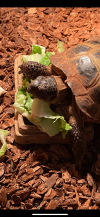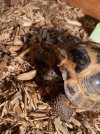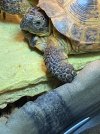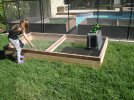Nicholas Mahoney
New Member
My Russian tortoise has been concerning me lately. He hasn’t been eating very much at all - it has been said by vets that he’s a picky eater. He spends his days hiding in the back of his home, a wooden, open-faced structure, buried in bedding.
I continue to look things up to tell whether or not he has anything wrong with him or if he is unhappy. I’ve gotten him toys and enrichment to prevent that, but he’s still inactive.
In all honesty, this is causing a lot of stress, worry, and guilt. I’m starting to wonder if he should have a better home where he can be better taken care of.
How could I do that?
I continue to look things up to tell whether or not he has anything wrong with him or if he is unhappy. I’ve gotten him toys and enrichment to prevent that, but he’s still inactive.
In all honesty, this is causing a lot of stress, worry, and guilt. I’m starting to wonder if he should have a better home where he can be better taken care of.
How could I do that?







